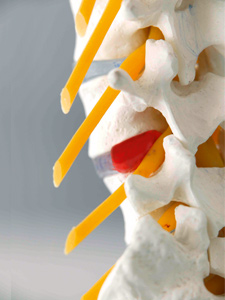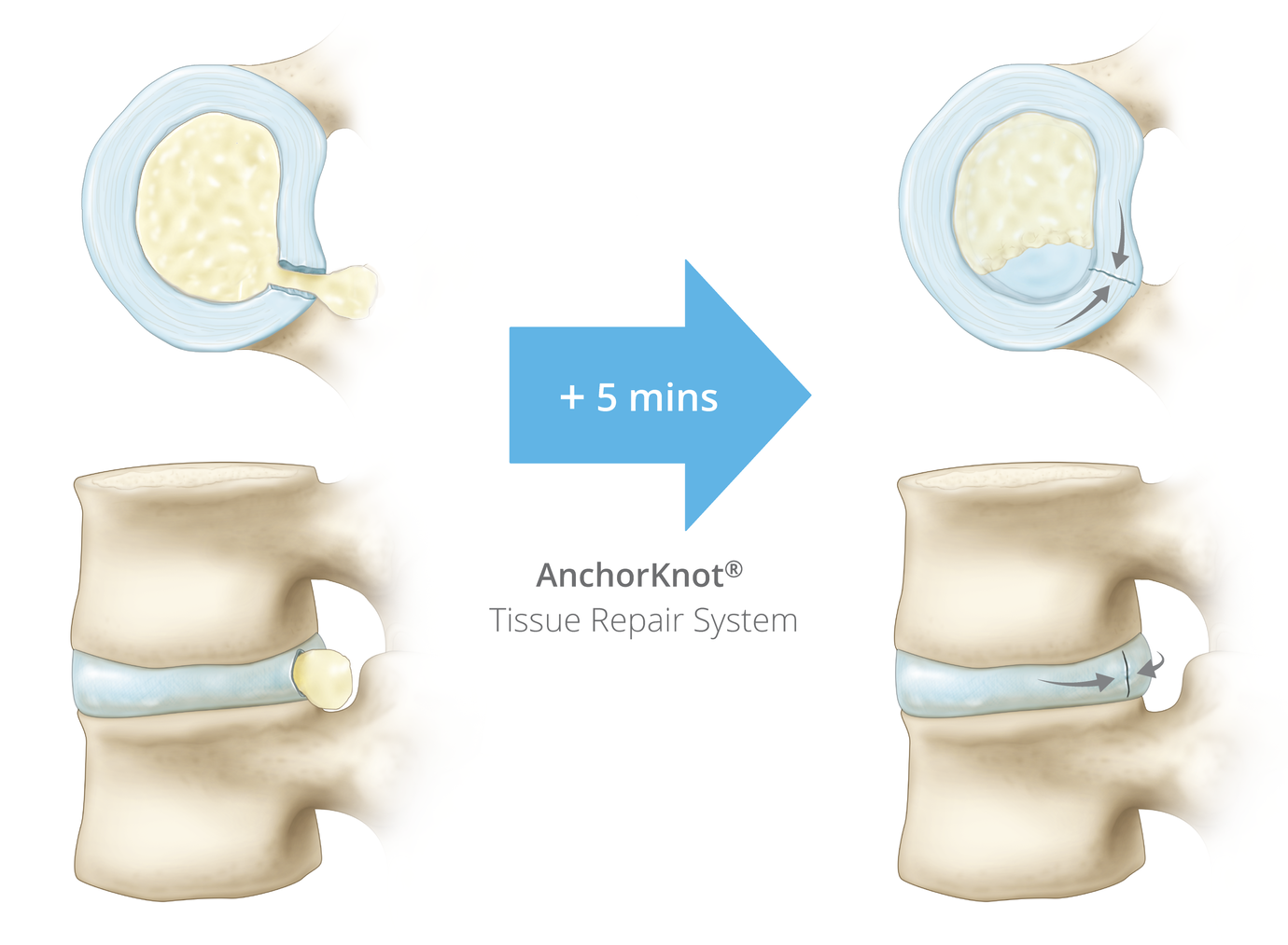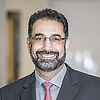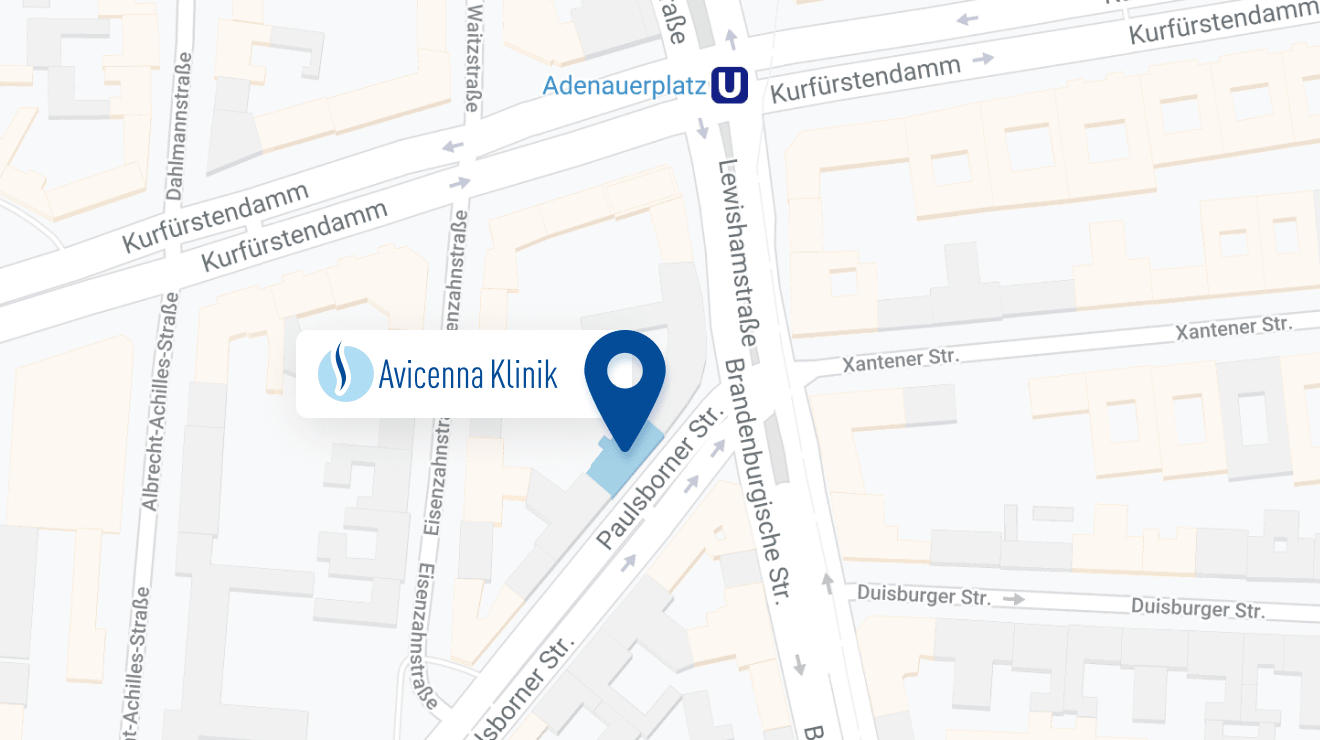What is the fiber ring?
Before talking about treatment variants, we need to clarify what is a fiber ring and what turns it in a “broken” fiber ring.
In our spine, the 23 discs our spine contains sit between the individual vertebrae and perform their buffer function by intercepting vibrations. They are made up by a soft nucleus (nucleus pulposus) and an outer fibrous ring (annulus fibrous), which provides the necessary stability. In case of wear (degeneration), due to a permanent, incorrect or intensive strain and during the aging process it is possible that fissure (split) arises in the fibrous annulus, through which gelatinous core leaves the disc, enters into the spinal canal and presses on the nerve route. This is what we call a herniated disc (disc prolapse or herniation).
The intervertebral discs are most frequently affected in the lower part of the lumbar spine (L4/L5 and L5/S1). Many therapies are available to relieve patients from pain; they range from conservative therapy to microsurgical surgery. The majority of patients subsequently reported excellent results but in 10-15% of those who were successfully operated, may suffer from a new disc hernia (recurrence).
We know that by recurrence disc hernia gelatinous mass from a perforated disc causes leave the disc again to the spinal canal, which cause again pain and discomfort in patients. In this case on would decide for a new surgery. Furthermore, repeating the operation means increasing the scar tissue around the nerve roots.
But this can be avoided significantly by the first surgery using this new method.
What does recurrence mean?
Protagonist: Patient. Antagonist: Pain. Where: The same place. When: After a successful treatment.
Specialists and patients are very disappointed when pain, after a successful therapy, comes back after weeks, months or even years. Surgically treated patients suffer of a new disc hernia in about 10%, not because of their wrong behavior or a wrong surgical technique. Rather, a progressive degeneration and the fact that the crack in the fiber ring is still open cause a renewed herniated disc - the fiber ring tear is a kind of "gate" through which disc tissue can emerge again.
To prevent this situation some surgeons start to operate more aggressively: instead of just removing the protruding disc tissue that presses on the nerves, they take out the entire disc to avoid recurrence. The problem here is: If you take out the intervertebral disc, the process of degeneration of the adjacent vertebral edges will increase. In the long term, this surgical approach often causes a significant deterioration, further interventions and in the worst case, a spinal fusion.
Other doctors try to solve this problem by inserting a titanium implant to close the gap of the fibrous annulus, thus not only risking damaging the nerves but also - given the consequential creation of shadows - the quality of the MRI images.
How does the fiber ring closure exactly work?
Fortunately, the medical-surgical science is very innovative, which in this case leads us to a fiber ring closure which means that the crack of the fiber ring is closed intraoperatively with a special suture technique. Intraoperatively at the same time means: The repair of the fiber ring is made immediately after the removal of the spinal disc material – that is to say in the same procedure.
Experienced surgeons need about 5-10 minutes for this. This revolutionary technology significantly reduces the possibility of a relapse. It is not only new techniques but also new materials that make it possible to close the small or larger defects in the fiber ring around the gelatinous core. We proceed as follows: After removal of the incident, using special instruments, we bring a special thread to one side of the crack making it go all through to the other side in order to knot it and close the “gate”. The seam is so strong that it can stand up to a lot of pressure - up to 15 Newton.
Avicenna Clinic is one of the first clinics in Germany to use this special suture technique for a long time, thus significantly reducing the recurrence ratio.
Closure of fibrous annulus gives hope!
With the help of this new technology, the tear of the fiber ring is closed with an intraoperatively special suture technique that is to say during the procedure and right after removal of the protruding disc tissue. Experienced surgeons need about 5-15 minutes for this. The new method significantly reduces the likelihood of recurrences significantly.
The Avicenna Clinic in Berlin is always willing to help you
Since the year 2001, the Avicenna Clinic is based in Berlin. Our doctors have at least 25 years of international experience in their respective fields (neurosurgery, spinal surgery, anesthesia, and orthopedics).
If you have severe back pain, a herniated disc or a suspected herniation, please contact us using the following information:




